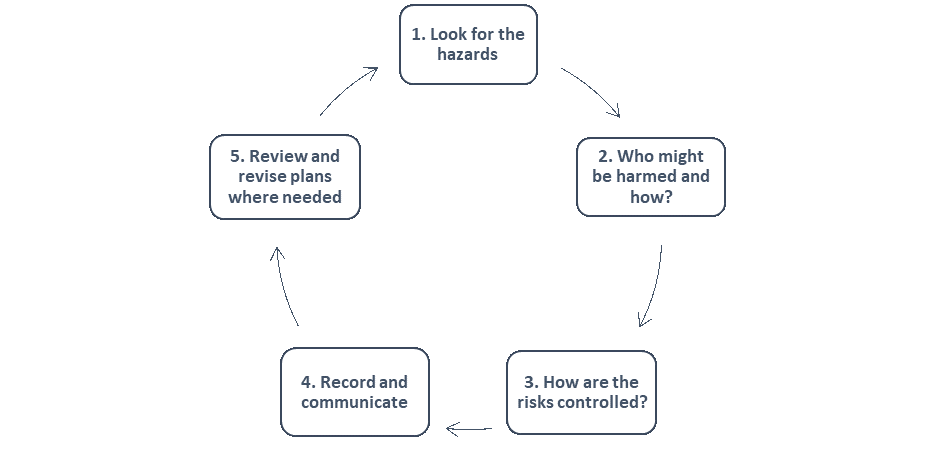Staying Safe
Safety checklist for Managers
Quick links
Staying Safe
(Published September 2021, replacing August 2020)
This is aimed to help all Managers to fulfil their role and responsibilities in managing and supporting safety in Scouts.
It's the responsibility of all those involved in Scouting to seek, so far as is reasonably practicable, to ensure that all activities are conducted in a safe manner without risk to the health of the participants.
The safety of both young people and adults is important. A large part of this is about being organised, asking the right questions and doing things that will help safety without taking away a sense of adventure appropriate to the age group. This is a straightforward checklist that can be dealt with quickly and easily. Additional support can be found on the Safety and Safeguarding section of our website, or alternatively, speak to your Safety Adviser line manager.
1. Policy
Read the Safety Policy (POR Chapter 2) to understand your specific responsibilities within it.
2. Your responsibilities within the Safety Policy
POR rule 2.5 explains the responsibilities different members have within the Safety Policy. Remember there are some responsibilities that all adults hold and others specific to your roles as a Commissioner and line manager.
- Take responsibility for making sure that this policy is being implemented in their area of responsibility.
- Have the authority to undertake the requirements outlined above, or tasks required to support the requirements. These can be delegated as necessary.
- Have the responsibility for making sure that the policy is followed - this can never be delegated.
- When incidents are reported, managers must make arrangements to complete a proportionate review, and learn and share lessons from the incidents (in accordance with Chapter 7).
Managing safety locally
Here are some practical tips on how to put into practice the responsibilities you hold as a manager within Scouts.
- Make sure that the appointment process includes explaining the Safety policy and responsibilities to new volunteers.
- Make sure that all adults have a copy of the Safe Scouting and emergency procedures card (Purple Card).
- Make sure leaders are using the Safety checklist for leaders.
- Keep up to date with developments in safety management in Scouts and share this information with those you manage.
- Make sure that you and all adults that you manage have undertaken the training relevant to their role.
- Monitor training compliance using the reports available.
- Address non-compliance with training using mutually agreed restrictions.
- Make sure leaders know where to get support with undertaking and reviewing their risk assessments.
- Make sure leaders understand how and when to record and report incidents, accidents and near misses. Information is contained within the Purple Card.
- Appoint a County/Area/Region Safety Adviser and know how to contact this person for support.
- Make sure that incidents are reviewed to gather learnings that can help prevent incidents in the future; share these learnings as appropriate.
- Make sure a positive culture exists to enable adults and young people to express their safety concerns.
- Monitor compliance and take action where appropriate.
- Meet and consult regularly with your team about risk assessments, accidents, near misses, and other safety advice. You need to define how regularly you will meet and stick to your plan.
- Make safety an agenda item at all meetings and make sure all relevant safety information is communicated effectively. Discuss: recent updates, key priorities, compliance and concerns.
- Discuss safety in appointment reviews and informal meetings with those you manage. Make sure they’re undertaking the responsibilities of their role within the Safety policy and have an open mechanism for asking for support
or raising concerns.
Finally, lead by example – if you identify or are notified of hazards and risks, be seen to address the issues. Others need to see that this is a positive behaviour that will help us provide a safe environment for our members.
Don’t forget that working in partnership with the Executive Committee and other line managers will help you both in fulfilling your responsibilities.
Risk Assessment
Use the Five Steps of Risk Assessment or Managing a Safe Scout Premises and see the diagram below:
- Look for the hazards, ie what could cause harm.
- Who might be harmed and how?
- How is the risk controlled?
- Where appropriate, record your findings so that others are aware of the precautions to be taken (for more guidance see the risk assessment page).
- Review and revise plans where needed

All activities must be risk assessed.
See the diagram above enlarged
Staying safe - Managers
The Staying Safe - Safety Checklist for Managers is a pocket sized checklist aimed to help all adults working with young people to fulfill their role and responsibilities in managing and supporting safety in Scouting.
Updated stock now available!
Order a free copy from the Scouts store >
Risk assessments
Discover more about risk assessments